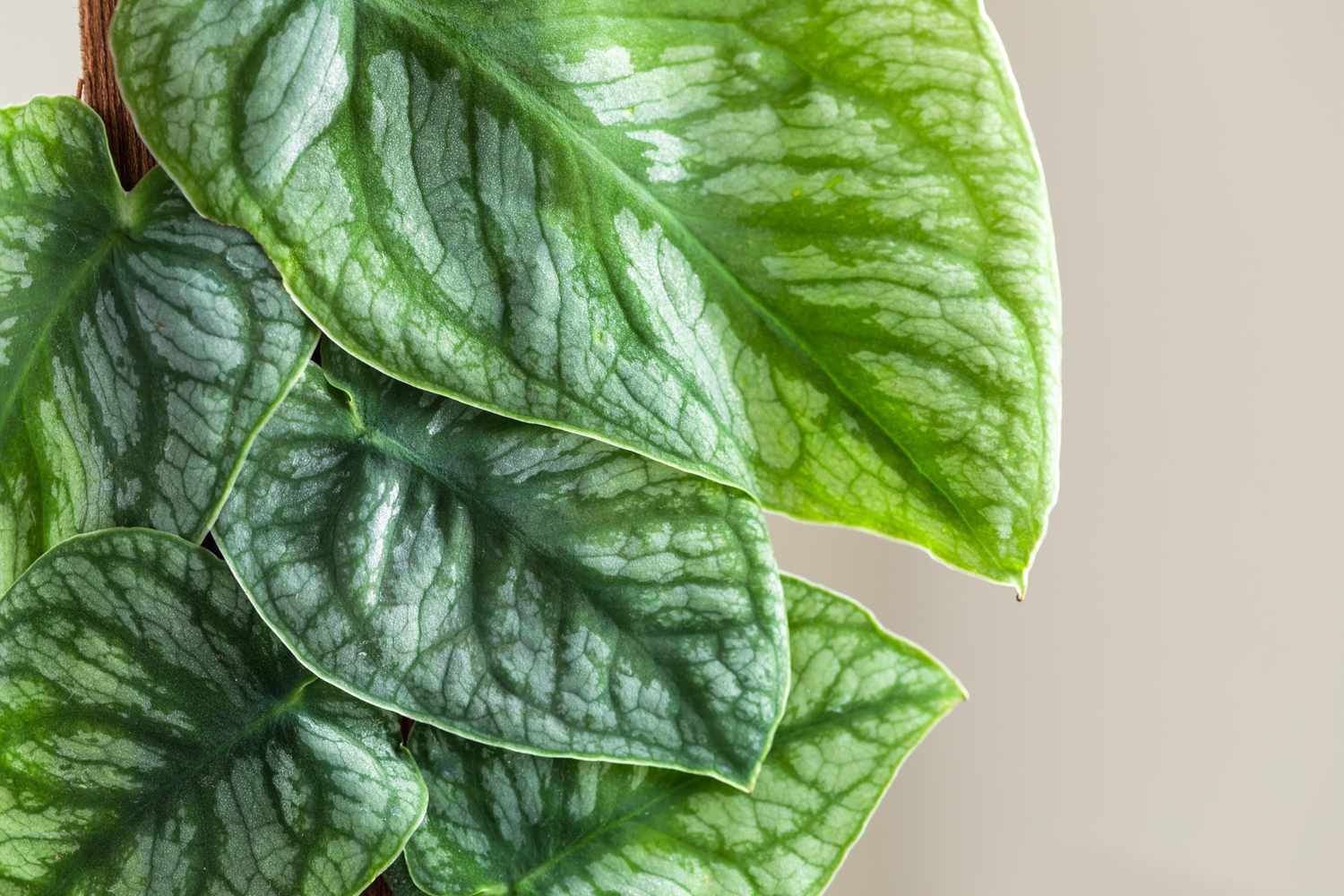Monstera Dubia, often dubbed the Swiss Cheese Plant, Hurricane Plant, Split-Leaf Philodendron, or Mexican Breadfruit, is a captivating addition to any indoor plant collection. Its unique characteristic of starting as a shingling plant, with leaves lying flat against a support, and then transitioning to larger, split leaves as it matures, makes it a plant of two stories. Here’s a comprehensive guide to caring for your Monstera Dubia, ensuring it thrives in your care.

Distinctive Features and Facts
- Appearance: Monstera Dubia is known for its small, heart-shaped leaves with beautiful silver variegation. As it matures, the leaves grow larger and develop the characteristic splits of Monsteras.
- Growth Habit: It’s a climber, often using aerial roots to attach itself to supports. In its natural habitat, it can climb large distances up trees.
- Rare and Unique: Among the Monsteras, the Dubia is relatively rare and prized for its unique shingling growth when young.
- Versatile: Known for its adaptability, it can be acclimated to tolerate direct sunlight, which contributes to its rapid growth.
Optimal Growing Conditions
- Light: The Swiss Cheese Plant thrives in bright, indirect light. Too much direct sunlight can scorch its leaves, while too little will slow its growth and reduce variegation.
- Watering: I water my Monstera Dubia when the top inch of soil is dry. It’s important to avoid overwatering, as this can lead to root rot.
Temperature and Humidity Preferences
- Temperature: It prefers warmer temperatures, typically between 65°F to 85°F (18°C to 29°C). I avoid placing it near cold drafts or air conditioning vents.
- Humidity: Monstera Dubia loves high humidity. I maintain around 60% humidity for optimal growth. In dry environments, I use a humidifier or place a pebble tray with water beneath the pot.
Soil and Fertilization
- Soil: A well-draining potting mix is essential. I use a mix of potting soil, peat moss, and perlite for aeration and moisture retention.
- Fertilization: During the growing season, I fertilize it monthly with a diluted, balanced fertilizer. I reduce feeding in the winter.
Support and Training
- Climbing Support: Providing a moss pole or trellis encourages its natural climbing habit and supports healthy growth.
- Training: As a shingling plant, you can train young Monstera Dubia plants to lie flat against a wooden board or moss pole.
Pruning and Maintenance
- Pruning: Occasional pruning helps control its size and shape. I also remove any yellowing or damaged leaves to keep the plant healthy.
- Leaf Cleaning: Gently wiping the leaves with a damp cloth keeps them dust-free and enhances their appearance.
Propagation Techniques
- Stem Cuttings: Propagation is relatively straightforward. I take stem cuttings with a node and aerial root and root them in water or soil.
Pest Management
- Pests: Keep an eye out for common pests like spider mites, mealybugs, and scale. I treat infestations promptly with insecticidal soap or neem oil.
Toxicity
- Safety Note: Like other Monsteras, the Dubia is toxic if ingested. It’s best to keep it out of reach of pets and small children.
Decorative Uses
- Aesthetic Appeal: Its climbing nature and changing leaf patterns make the Monstera Dubia a dynamic and interesting plant for home decor. It fits well in urban jungle themes, climbing up walls or shelves.
5 Compelling Reasons to Choose Monstera Dubia as Your Houseplant
The Monstera Dubia, with its distinctive characteristics and growth patterns, is not just another houseplant. It’s a statement of nature’s artistry and versatility. Here are five facts that highlight why the Monstera Dubia should be your next botanical addition:
1. Unique Aesthetic Appeal 🎨
- Shingling Growth Pattern: The Monstera Dubia starts its life with a unique shingling habit, where its leaves lie flat against a support, creating a tapestry-like appearance. This unusual growth pattern is a visual treat and a conversation starter.
- Transition to Split Leaves: As it matures, the plant undergoes a dramatic transformation. The leaves grow larger and begin to develop the characteristic Monstera splits and holes, known as fenestrations. This transition adds an element of surprise and visual interest to your plant collection.
2. Adaptable Light Requirements ☀️
- Tolerates a Range of Lighting Conditions: While the Monstera Dubia thrives in bright, indirect light, it is also adaptable to different light levels. This flexibility makes it suitable for various locations in your home, from a sunny windowsill to a shaded corner.
- Direct Sun Acclimation: Uniquely, this plant can be acclimated to tolerate some direct sunlight, contributing to its versatility as an indoor plant.
3. Moderate Maintenance & Care 🌱
- Low Maintenance: Despite its exotic appearance, the Monstera Dubia is relatively low maintenance. It has typical watering needs for a tropical plant and doesn’t require frequent repotting.
- Pest Resistance: It’s also quite resilient to common houseplant pests, which means less hassle for you in terms of plant healthcare.
4. Improves Indoor Air Quality 🌬️
- Natural Air Purifier: Like many houseplants, the Monstera Dubia contributes to a healthier indoor environment. It helps purify the air by absorbing toxins and producing oxygen, making your home not just more beautiful but also healthier.
5. Versatile and Decorative 🏡
- Stylish Interior Addition: Whether you let it climb a moss pole or allow its leaves to cascade from a hanging basket, the Monstera Dubia fits seamlessly into various decor styles. From minimalist to bohemian, it complements and enhances different aesthetics.
- Dynamic Growth: The evolving nature of its foliage, from juvenile shingling leaves to mature split leaves, means that it offers a dynamic visual as it grows, almost like having multiple plants in one.
The Monstera Dubia, with its dual personality as both a shingling and split-leaf plant, offers a unique journey in plant growth and aesthetics. It’s a delightful challenge for indoor gardeners and a visually stunning addition to any space. With the right care, it will reward you with rapid growth and an ever-changing appearance. 🌿🏠

